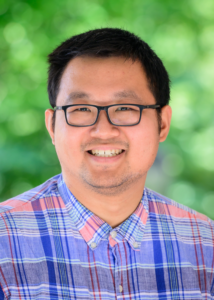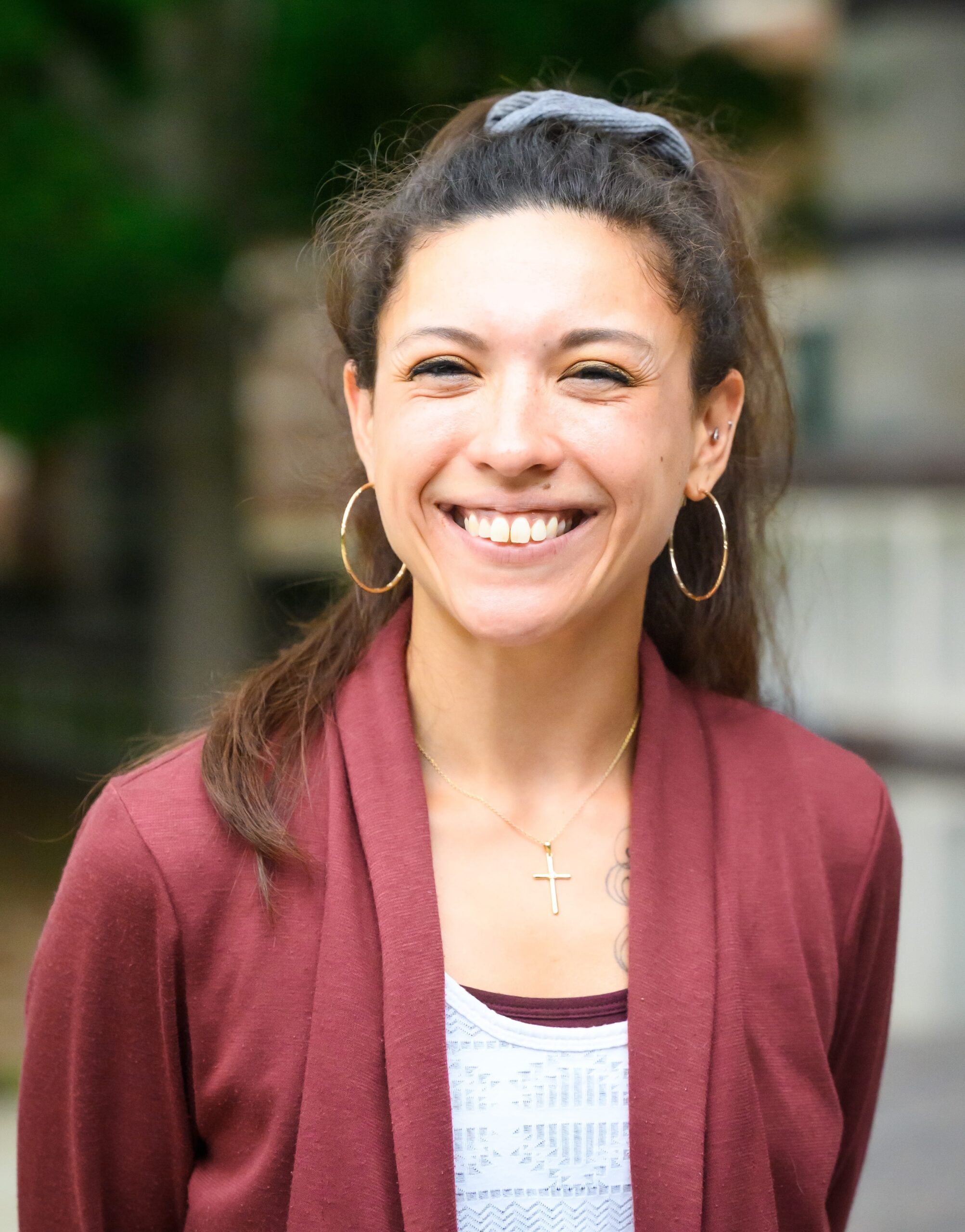Our Leadership
Directors
Executive committee
Staff
External Advisory Board
Directors

Zaida Luthey-Schulten, Director
Zaida “Zan” Luthey-Schulten is primarily responsible for the GPU-based integrative cell modeling of 4D whole cell models (4DWCMs) and knowledge transfer with NVIDIA. She is responsible for all NSF reporting requirements.
She received a B.S. in Chemistry from the University of Southern California in 1969, a M.S. in Chemistry from Harvard University in 1972, and a Ph.D. in Applied Mathematics from Harvard University in 1975. From 1975 to 1980, she was a Research Fellow at the Max-Planck Institute for Biophysical Chemistry in Goettingen, and from 1980 to 1985, a Research Fellow in the Department of Theoretical Physics at the Technical University of Munich. She is theMurchison-Mallory Endowed Chair in Chemistry. Zan closely collaborates with many theory and experimental groups in the center, as well as outside groups, to unify -omics, microscopy and many other types of data into 4DWCMs of bacterial, yeast and human cells.

Rohit Bhargava, Associate Director
Rohit is QCB associate director. His lab conducts advanced optical experiments, such as IR tomography and optogenetics. His lab is engaged in fundamental advances in measurement technology that can record spectroscopic data from exceptionally small volumes of single cells. Rohit and his colleagues advanced previous methods to increase greatly the reliability and speed of chemical imaging data.
They are currently working with Mark Anastasio to develop more sensitive spectral analysis methods with signal processing of recorded data. They are working with Martin Gruebele to quantify spectral properties of metabolites. And, they have started working with Angad Mehta group to chemically image changes in yeast mitochondrial dynamics alter metabolism. Rohit also directs the Cancer Center at Illinois, with synergies in imaging and how cells respond to perturbations.
Executive Committee

Sharlene Denos
Sharlene is responsible for overseeing the Broader Impacts aims of the STC for Quantitative Cell Biology. She serves on the Executive Committee and chairs the Inclusion, Diversity, Equity, and Access (IDEA) committee. She will manage outreach, diversity, and professional development programs for the center, including the annual Summer School in Quantitative Cell Biology, the Villa-Cisse Scholars Program, the Summer Sabbatical, and STC-QCB CARES Program.
She received her B.S. in Biochemistry and Molecular Biology from the UC Santa Cruz and her Ph.D. in Biophysics and Quantitative Biology from Illinois. She is currently a Teaching Assistant Professor in the Physics Department at Illinois, where she oversees the development of courses in biological physics to be ported to other universities with help of the QCB, as well as many diversity and public engagement initiatives.

Martin Gruebele
Martin is responsible for imaging and tracking experimental efforts with MINFLUX and will coordinate with the computational and outreach teams, as well as the director and team leaders. He and Glenn Fried are the primary contact for knowledge transfer with Abberior Instruments.
He received his B.S. in 1984, and his Ph.D. in 1988, both from UC Berkeley. After working as a postdoctoral fellow at Caltech, he joined the faculty of the University of Illinois in 1992. He is theJames R. Eiszner Endowed Chair in Chemistry. His group studies virus capsids and beads ranging in size from 30-150 nm in live cells, using MINFLUX as a probe of mesoscale structure in nucleus and cytoplasm via diffusion, and will measure interactions between individual pairs of proteins in the live mammalian cell using MINFLUX, including spliceosome and other dynamic organelles where the whole-cell models need inputs. Published collaborations with Zan -Luthey-Schulten, Emad Tajkorshid and others in the center focus on whole-cell and even organismal dynamics.

Erik Lindahl
Stockholm University and KTH Royal Institute of Technology
Erik’s research is focused on understanding structure and function of ligand-gated ion channels, particularly in the human nervous system. Much of his team’s work is dependent on large computer resources, so they develop numerous computational tools, particularly in the codes GROMACS & RELION. Like molecular simulation technology in GROMACS to enable modeling, simulation and analysis of systems with hundreds of millions to billions of particles and combining cryo-EM and cryo-ET data, such as collected by Mahamid’s group, with molecular modeling. Together with a number of universities in Europe, they have established a new EU-funded center-of-excellence for computational biomolecular research, BioExcel, where he’s the lead scientist. Since 2014, he has served on the Scientific Steering Committee for the European Computer Infrastructure PRACE, as well as chair of the Scientific Steering Committee and on the PRACE Board of Directors. Presently, he sits on the Research and Industrial Advisory Group of EuroHPC. He holds a PhD in Theoretical Biophysics fr<h3>om KTH, Stockholm, Sweden, and has authored more than 130 publications.

Julia Mahamid
European Molecular Biology Laboratory
Julia contributed to advancement of cryo-focused ion beam preparations from intact cells, their synergy with state-of-the-art cryo-electron microscopy imaging, spearheaded the development of 3D cryo-correlative confocal fluorescence microscopy for site-specific preparations, and pioneered cryo-FIB lift-out for visual proteomics in multicellular specimens. She and her group at the EMBL, an international team of interdisciplinary researchers, continue to develop cryo-electron tomography to achieved unprecedented resolution for macromolecular complexes and their organization inside cells to give rise to complex biology. They will collaborate with members of the STC to harness these data towards constructing realistic ultrastructural and molecular representations of whole cells.

Angad Mehta
Angad’s team leads the chemical biology components of center research. His lab has created yeast mutants that alter mitochondrial function and could alter mitochondrial networks. He uses fluorescence confocal imaging to test the correlation between mitochondrial function or dysfunction genotypes to changes in the mitochondrial dynamics. His group collaborates with Rohit Bhargava’s lab to perform imaging studies to investigate how changes in yeast mitochondrial dynamics alter metabolism. Angad’s lab has generated transcriptomics data for the minimal cell (strain syn1), and is currently working with HPCBio and Zan Luthey-Schulten’s lab to analyze the transcriptional profile of the minimal cells. They are also working on generating more replicates of these transcriptomics datasets. This is expected to inform operons, operonic structure, and relative abundances of all the transcripts within the minimal cell. They have also worked with Taekjip Ha’s lab on imaging studies of the minimal cell to study its cell division process.
Staff

Christopher Zwilling, Assistant Director of Research
Email: zwillin1@illinois.edu
Chris leads the day-to-day operations of the Center, working closely with the Director and staff to carry out the Center’s mission. He is responsible for coordinating meetings, leading Center events, overseeing financial expenditures, and coordinating research activities. He earned his PhD in Quantitative Psychology in 2016 from the University of Illinois. He has led or co-authored 50 peer-reviewed science papers in multiple scientific disciplines, including psychology, cognitive neuroscience, statistics, computer science, nutrition and engineering.

GPU Programmer
Email:
The Center’s GPU programmer assists with writing necessary code for achieving Center research goals. This position is currently vacant.

Barbara Jewett, Communications Director
Email: bjjewett@illinois.edu
After earning a degree in English and journalism from Iowa State University where I excelled at avoiding science, my life has been science-filled: 15 years as an editor in the cosmetology and surfactants/detergents fields (chemistry of beauty, personal care and household products), 5 years as editor for an edible fats and oils society (organic chemistry); 16 years at the National Center for Supercomputing Applications (various sciences and engineering), and now communications director for QCB. Along the way I married a corn agronomist, raised an electrochemist daughter (married to a physician) and a son into constellations, thus proving the adage “You can run but you can’t hide.”

Lisa Johnson, Administrative Assistant
Email: lisa3@illinois.edu
Lisa provides support to the Center Director, coordinates events, initiates purchases, and assists with administrative tasks. She is earning her Master’s degree in English composition and rhetoric. Lisa enjoys cooking, writing, singing, reading true-crime, and spending time with her kids.

Annette Wells, Lab Manager
Email: acwells7@illinois.edu
Annette is the laboratory manager responsible for assisting with the QCB Broader Impact programming and research. With over 10 years of academic experience in chemistry, biology, and physics, she assists with creating new lab protocols and building the crucial foundation for educational structure in the lab. Annette anticipates and accommodates the needs of the researchers and students associated with the center, including the annual QCB Summer School, the Villa Cisse Scholars Program, and the Summer Sabbatical. Annette manages cell culture growth, lab equipment and consumables, procurement of supplies, proper safety procedures, waste management, and a variety of tasks that benefit the program. She has a BS in biology from Eastern Illinois University and a MS in agricultural leadership, education and communications from the University of Illinois. You can find Annette and her extensive indoor plant collection at Loomis Lab, Room 106A.

Katy Diaz, Office Support Specialist
Katy organizes seminars, Lunch and Learns, and assists with general office administration duties. When she’s not working, Katy is busy with her wonderful children and all their activities.
External Advisory Board

The Center for Quantitative Cell Biology hosts a symposium at Beckman Institute, along with a meeting of their External Advisory Board. Photo taken at the University of Illinois Urbana-Champaign on Friday, Dec. 6, 2024. (Photo by Fred Zwicky / University of Illinois Urbana-Champaign)
QCB Executive Advisory Board (from left): Margaret Gardel, Wolfgang Baumeister, Amy Herr, Gerhard Hummer, Shana Kelley, Jonas Reis, Victor Muñoz. Not pictured: Wei Min.
Wolfgang Baumeister, Max Planck Institute of Biochemistry
Dr. Baumeister is director emeritus and scientific member of the Department of Structural Biology, and leads the Emeritus Group Molecular Structural Biology.
Margaret Gardel, University of Chicago
Dr. Gardel is the Horace B. Horton Professor, physics and molecular engineering; director of the James Franck Institute, Institute for Biophysical Dynamics; and director of the NSF Center for Living Systems.
Amy Herr, University of California, Berkeley
Dr. Herr is the John D. & Catherine T. MacArthur Professor in the Department of Bioengineering, and chief technology officer and principal investigator for the Chan Zuckerberg Biohub Network.
Gerhard Hummer, Max Planck Institute of Biophysics
Dr. Hummer is director of the Department of Theoretical Biophysics at the Max Planck Institute of Biophysics in Frankfurt and a senior fellow at the Frankfurt Institute of Advanced Studies.
Shana Kelley, Northwestern
Dr. Kelley is president of the Chan Zuckerberg Biohub Chicago, and the Neena B. Schwartz Professor of chemistry and biomedical engineering.
Wei Min, Columbia University
Dr. Min is a professor of Chemistry.
Victor Muñoz, University of California, Merced
Dr. Muñoz is a professor of bioengineering at the University of California, Merced, and director of the Center for Cellular and Bio-Molecular Machines.
Jonas Reis, Max Perutz Labs, University of Vienna
Dr. Reis is a professor of advanced microscopy and cellular dynamics.
